
There is a wealth of information about the cathedral from Miracle Square web site, which contains quite a deal of information about this area, including the cathedral.
Construction began in 1064 when Pisa was at the climax of its political, military and economic power. Completion and consecration was in 1118. The first architect was Buscheto and then Rainaldo, who designed and built the facade and the enlargement of the building. There have been a number of building modifications over the centuries; for details, use the website listed above.

Although the tower is famous for its lean, the cathedral has a few sinking problems too, as evidenced by the left hand side of this wall. This whole area is built on soft soil left over from floods of the Arno. It is also wet, and thus makes for a very poor building base.
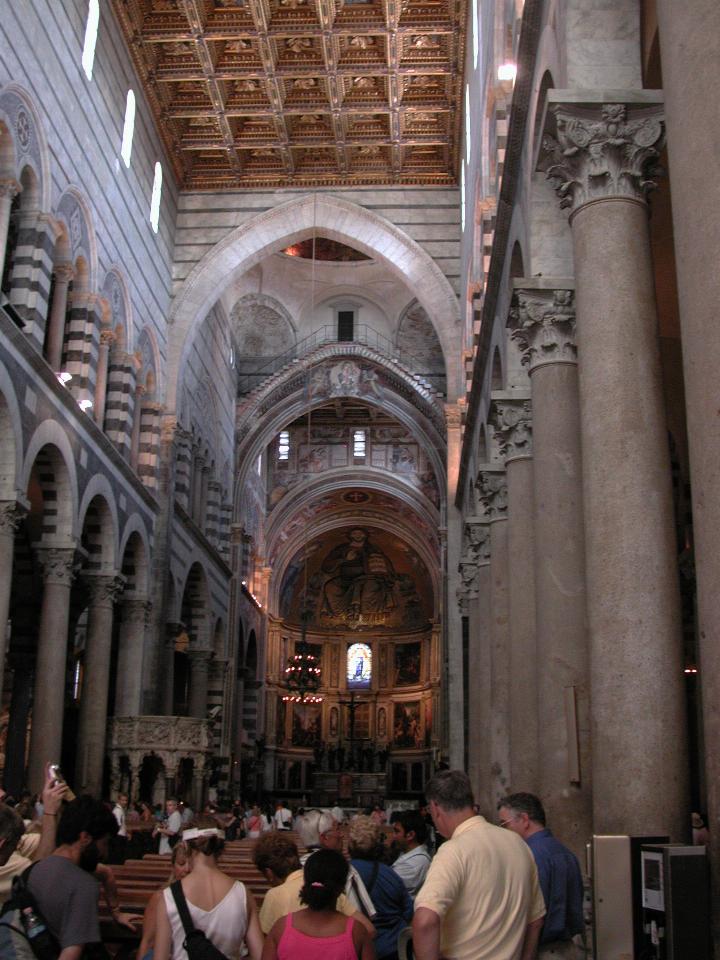
The view as one enters the Cathedral. Quite an impressive piece of work.

Sanctuary
The person looking at the camera in the left image is our guide for the Cathedral tour. Quite a good guide too, and not afraid to express his opinions, such as that of the new altar (see following).
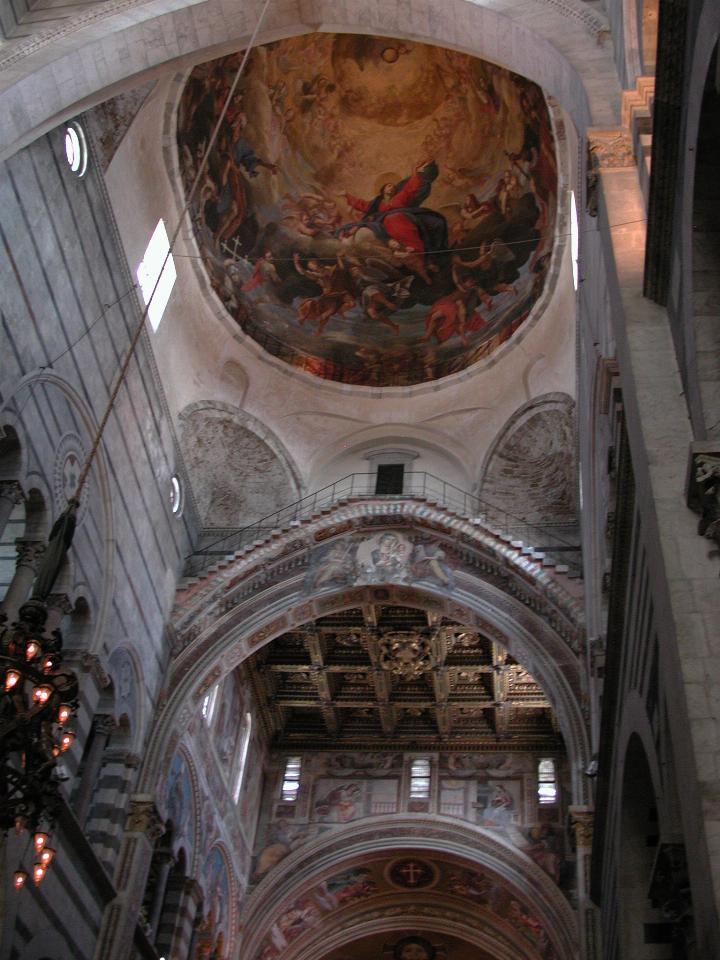
Sanctuary Roof and Dome
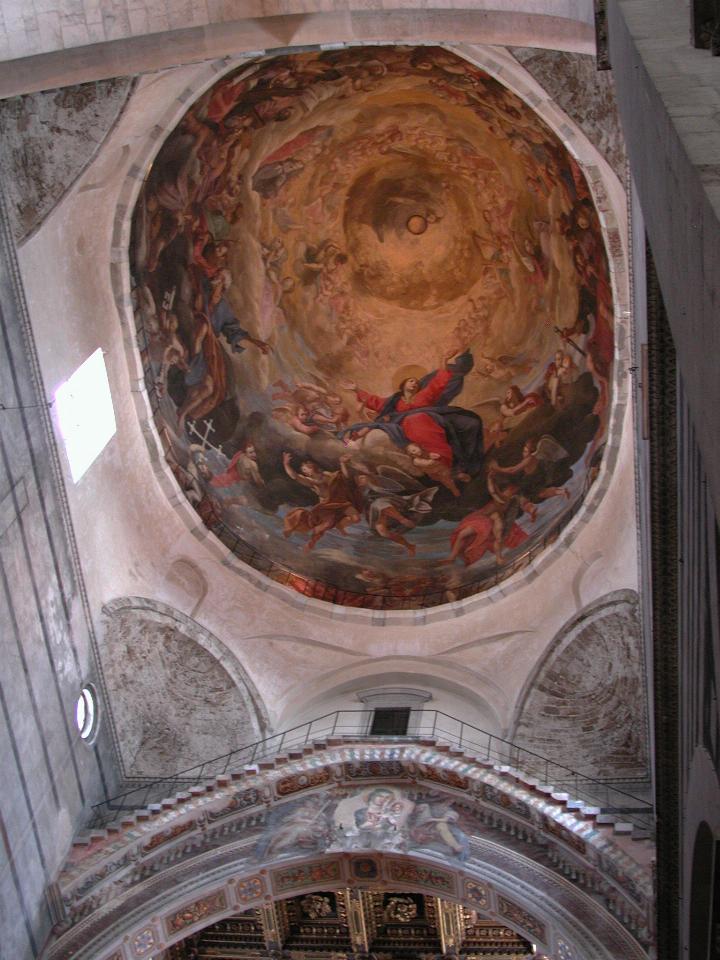
Dome
The fresco in/on the dome was painted by Orazio Riminaldi and his brother Girolamo between 1625 and 1633, and depicts the Assumption of the Virgin Mary. While this is much later than the original construction, it was required following a devestating fire in 1595.
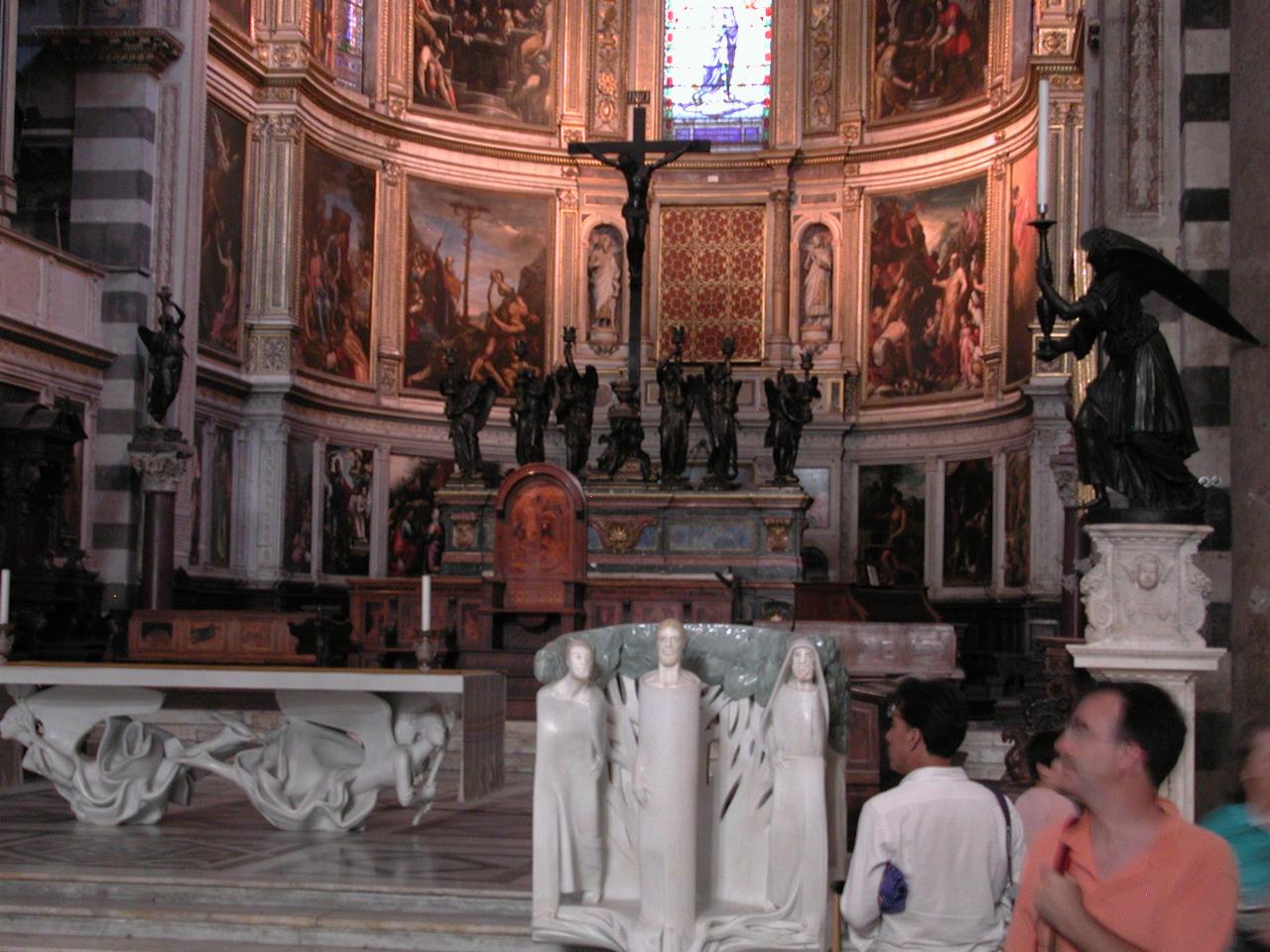
This view of the Sanctuary shows the new altar, a consequence of the reforms introduced in Vatican II in the late 1960s. The style of the new altar does not match that of the rest of the building, and while quite interesting as art, does not seem appropriate for this old building.

Ah, the famous chandelier. Why? Galileo used it to determine the physical laws of motion relating to swinging objects! Now it appears that this one uses electric lighting; while there were many scientific advances in the time of Galileo, I don't believe electric light was one of them, so how much connection there is between this chandelier and the one Galileo used is unknown to me.

The pulpit or ambo. As with electric light, public address systems were not available at the time of building this cathedral, so the pulpit was placed midway down the building so that there was some chance those at the back could hear. It certainly is an impressive piece of building; constructed by Giovanni Pisano during 1302 - 1310, but dismantled during the modifications following the 1595 fire as it was no longer functional. It was re-assembled in 1926, but in its current position (left side of nave) rather than its original right hand side.
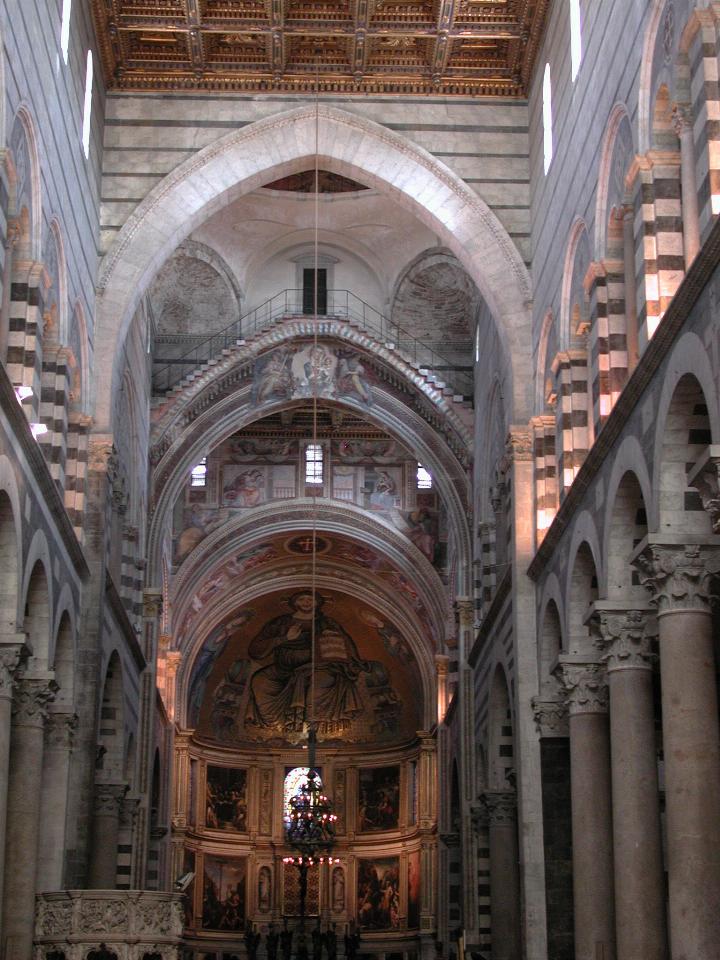
Our guide pointed us to the location at the rear of the cathedral which is in the middle of the building, and faces directly down the middle of the aisle. And it also shows the cosequences of the cathedral's slow sinking on the right hand side - the cable holding up the chandelier used to run through the middle of the face of Jesus behind the altar, but is now off by quite a bit as the detailed image shows (it's made from two parts of this image, but at full resolution).
And with that, we exited the cathedral and were left to our own devices, simply needing to be at the gate at the designated departure time.